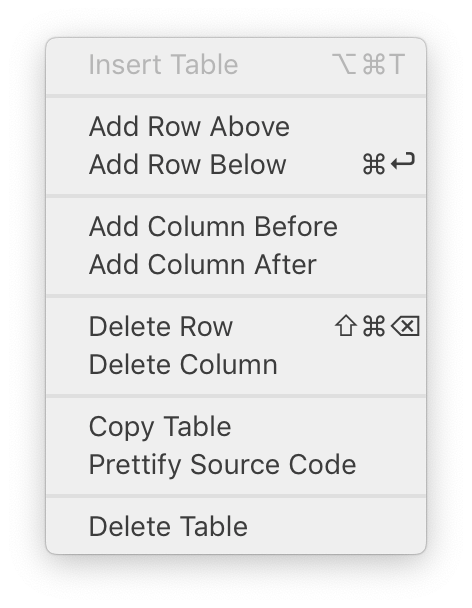
You can customize the output on these tabs: Select File > Export and then choose either HTML or PDF. If you ever need to export your work, click on the stacker menu in the top-left corner. If you click on an item that's been formatted, the markup displays. There's nothing fancy there, but Mark Text does render the formatting rather than displaying markup. Using a keyboard shortcut - for example, pressing CTRL+1 to add a heading or CTRL+i to make text italic.Clicking on the stacker menu in the top-left corner and selecting an option from the Paragraph or Format menus.Typing it as you would in a text editor.You can add Markdown formatting to your documents by: You can either start a new document or open an existing one. When you start Mark Text, it's a sparse, blank canvas. While not quite as polished as Typora, Mark Text is quite a flexible editor.ĭownload the version of Mark Text for your operating system - there are versions for Linux, MacOS, and Windows. It reminds me of an open source version of Typora. One dedicated Markdown editor that I've been exercising a lot is Mark Text. Those editors range from being just glorified text editors to some which are quite good. Not to the extent of their HTML-only predecessors from a few decades back, but there are more than a handful on the market.

Over the last while, something similar has been happening with dedicated Markdown editors. As the years passed, so did most of those editors.
#Typora shortcuts code#
Those were a mix of code editor and WYSIWYG tools, which were designed to get more and more people publishing in the then-burgeonening World Wide Web. You can set or change shortcut keys for menu items in the menu bar in native window style.( Note: This post was originally published, in a slightly different form, at The Plain Text Project and appears here via a Creative Commons Attribution-Share Alike 4.0 International License.)īack in the early and mid-1990s, there was a boom in dedicated HTML editors. Restart Typora, and the new key binding will be applied. Set or add JSON object which represents a key binding, for example: Open and edit from opened “File Explore”. Open Menu → Preference in Typora, then click “Open Advanced Settings”.

Tip: This requires a version of Typora ≥ v0.9.16. Then Command+Shift+P will be the shortcut key for menu command “always On Top” Select “Typora.app” from field Application, then enter the exact name of the menu command you want to add, and then type the shortcut key combination you want to assign.įor example, assume you want to add/change the shortcut key to pin Typora’s window, you can fill the dialog box as follows: Select App Shortcuts in its left panel.Ĭlick the “+” button, a dialog sheet would pop up. Open System Preference → Keyboard, select tab Shortcuts. We use macOS’s system feature to customize Typora’s key binding on macOS. Users can set or reassign shortcut keys for commands in Typora’s menu bar. On macOS, you can press Esc key to open inline preview for inline math, auto-complete for emoji, etc. Frequently Used Shortcut Keys Autocomplete You can find shortcut keys in the right side of each menu items from menu bar. You can use shortcut keys to quickly insert or modify styles or do other operations supported by Typora.


 0 kommentar(er)
0 kommentar(er)
